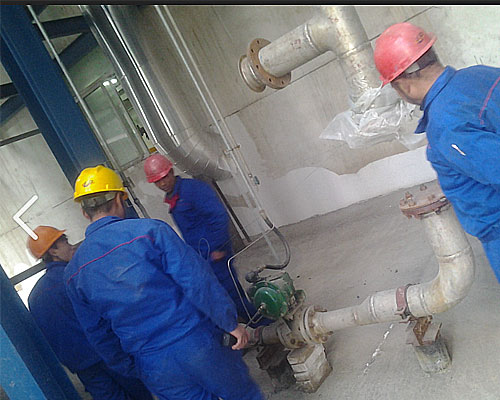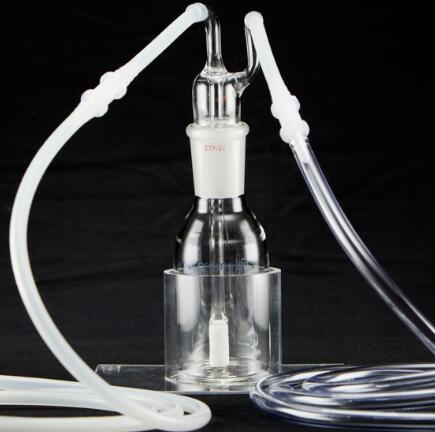Array
(
[id] => 4142
[site_id] => 1
[project_id] => 478
[cate_id] => 794
[thumb] => Array
(
[id] => 3816
[cate_id] => 1
[folder] => res/202409/20/
[name] => 9aaaa3e47cfe4894.jpg
[ext] => jpg
[filename] => res/202409/20/9aaaa3e47cfe4894.jpg
[ico] => res/_cache/_ico/38/3816.jpg
[addtime] => 1726801889
[title] => What-material-should-the-ozone-pipe
[attr] => Array
(
[width] => 500
[height] => 400
)
[note] =>
[session_id] =>
[user_id] => 0
[download] => 0
[admin_id] => 1
[mime_type] => image/jpeg
[gd] => Array
(
[auto] => res/_cache/auto/38/3816.jpg
[thumb] => res/_cache/thumb/38/3816.jpg
)
)
[content] => Ozone has a strong oxidizing property. If the pipe is made of ozone-intolerant materials, it is easy to be corroded. Some hoses will be oxidized and produce particles, which will enter the gas instrument along with the gas, which may cause the gas instrument to malfunction. Therefore, the pipe needs to be used in accordance with the regulations. The following are relevant standards for reference.
1. Liquid oxygen, oxygen, ozone and tail gas pipelines should comply with the following regulations:
1 The design of oxygen and ozone pipelines should comply with the relevant provisions of GB 50030, the "Design Specifications for Oxygen Stations", and GB 50316, the "Design Specifications for Industrial Metal Pipelines".
2 Liquid oxygen, oxygen, ozone and tail gas pipelines should be degreased and deoiled in advance.
3 Pressure pipelines should comply with the relevant provisions of GB/T 20801, the "Design Specifications for Pressure Pipelines Industrial Pipelines". Pipelines should also comply with the relevant provisions of GB 50316, the "Design Specifications for Industrial Metal Pipelines".
4 Ozone and oxygen pipelines should not be directly buried. The ozone injection main pipe should be laid in the pipe trench and covered with a movable cover.

For hot climate areas, the exposed part of the pipeline should be insulated according to relevant specifications.
5 The ozone tail gas pipeline should be insulated, and the pipeline drainage point should be designed at the lowest point to discharge condensed water.
2. The materials of the ozone oxidation system should comply with the following regulations:
1 Equipment, valves, pipelines, materials, etc. that come into contact with ozone, ozone-containing gases, and ozone-containing liquids should be made of 316L stainless steel or above ozone-resistant materials; sealing materials should be made of polytetrafluoroethylene and other ozone-resistant materials.
2 The part of the ozone contact tank that comes into contact with ozone should be resistant to ozone corrosion.
3 The weir plates, valves and other equipment and materials of the water inlet channel of the subsequent process of the ozone contact tank should be ozone-resistant.
4 The microporous aeration device should be made of ceramic materials.
5 When the chloride ion concentration of the raw water in the ozone contact tank is higher than 800 mg/L, the material of the parts in contact with ozone and raw water should be made of corrosion-resistant materials such as duplex stainless steel.

This is a short list of ozone-resistant materials suitable for different ozone applications
Ozone gas:
Glass, quartz
Teflon (polytetrafluoroethylene, polystyrene)
Stainless steel (300 series)
Polypropylene, polyethylene
Fluororubber
Ozone in solution (water):
Stainless steel (316 series)
Polyvinyl chloride
Teflon (polytetrafluoroethylene, polystyrene)
Glass, quartz gaskets, fittings and seals Ozone-resistant materials:
Stainless steel (316 series)
Carres
Kenner
Teflon (polytetrafluoroethylene, polystyrene)
Not all of the above materials can resist high ozone concentrations (<20%)
[parent_id] => 0
[module_id] => 114
[title] => What material should the ozone pipe be made of
[dateline] => 1726802149
[lastdate] => 1726802149
[sort] => 0
[status] => 1
[hidden] => 0
[hits] => 1360
[tpl] =>
[seo_title] => What material should the ozone pipe be made of
[seo_keywords] => ozone pipe
[seo_desc] => Equipment, valves, pipelines, materials, etc. that come into contact with ozone, ozone-containing gases, and ozone-containing liquids should be made of 316L stainless steel or above ozone-resistant materials; sealing materials should be made of polytetraf
[tag] => Array
(
[0] => Array
(
[id] => 110
[site_id] => 1
[identifier] =>
[title] => ozone generator system,Industrial ozone generator,ozone generator project
[url] => https://healthept.com/tag/110
[target] => _self
[hits] => 1563
[alt] => ozone generator system,Industrial ozone generator,ozone generator project
[is_global] => 0
[replace_count] => 0
[seo_title] =>
[seo_keywords] =>
[seo_desc] =>
[tpl] =>
[title_id] => c794
[html] => ozone generator system,Industrial ozone generator,ozone generator project
)
)
[attr] =>
[replydate] => 0
[user_id] => 0
[identifier] => ozone-pipe-material
[integral] => 0
[style] =>
[url] => https://healthept.com/ozone-pipe-material.html
[_catelist] => Array
(
[794] => Array
(
[id] => 794
[site_id] => 1
[parent_id] => 736
[status] => 1
[title] => Industrial
[taxis] => 15
[tpl_list] =>
[tpl_content] =>
[psize] => 0
[seo_title] => Industrial ozone generator system project
[seo_keywords] => ozone generator system,Industrial ozone generator,ozone generator project
[seo_desc] => KQ Environmental Tech shares knowledge and useful articles onIndustrial ozone generator system project applications.The following is our case application, hope to provide you with valuable information.
[identifier] => Industrial
[tag] => ozone generator system,Industrial ozone generator,ozone generator project
[style] =>
[module_id] => 0
[psize_api] => 0
[url] => https://healthept.com/Case/Industrial.html
)
)
)
Ozone has a strong oxidizing property. If the pipe is made of ozone-intolerant materials, it is easy to be corroded. Some hoses will be oxidized and produce particles, which will enter the gas instrument along with the gas, which may cause the gas instrument to malfunction. Therefore, the pipe needs to be used in accordance with the regulations. The following are relevant standards for reference.
1. Liquid oxygen, oxygen, ozone and tail gas pipelines should comply with the following regulations:
1 The design of oxygen and ozone pipelines should comply with the relevant provisions of GB 50030, the "Design Specifications for Oxygen Stations", and GB 50316, the "Design Specifications for Industrial Metal Pipelines".
2 Liquid oxygen, oxygen, ozone and tail gas pipelines should be degreased and deoiled in advance.
3 Pressure pipelines should comply with the relevant provisions of GB/T 20801, the "Design Specifications for Pressure Pipelines Industrial Pipelines". Pipelines should also comply with the relevant provisions of GB 50316, the "Design Specifications for Industrial Metal Pipelines".
4 Ozone and oxygen pipelines should not be directly buried. The ozone injection main pipe should be laid in the pipe trench and covered with a movable cover.

For hot climate areas, the exposed part of the pipeline should be insulated according to relevant specifications.
5 The ozone tail gas pipeline should be insulated, and the pipeline drainage point should be designed at the lowest point to discharge condensed water.
2. The materials of the ozone oxidation system should comply with the following regulations:
1 Equipment, valves, pipelines, materials, etc. that come into contact with ozone, ozone-containing gases, and ozone-containing liquids should be made of 316L stainless steel or above ozone-resistant materials; sealing materials should be made of polytetrafluoroethylene and other ozone-resistant materials.
2 The part of the ozone contact tank that comes into contact with ozone should be resistant to ozone corrosion.
3 The weir plates, valves and other equipment and materials of the water inlet channel of the subsequent process of the ozone contact tank should be ozone-resistant.
4 The microporous aeration device should be made of ceramic materials.
5 When the chloride ion concentration of the raw water in the ozone contact tank is higher than 800 mg/L, the material of the parts in contact with ozone and raw water should be made of corrosion-resistant materials such as duplex stainless steel.

This is a short list of ozone-resistant materials suitable for different ozone applications
Ozone gas:
Glass, quartz
Teflon (polytetrafluoroethylene, polystyrene)
Stainless steel (300 series)
Polypropylene, polyethylene
Fluororubber
Ozone in solution (water):
Stainless steel (316 series)
Polyvinyl chloride
Teflon (polytetrafluoroethylene, polystyrene)
Glass, quartz gaskets, fittings and seals Ozone-resistant materials:
Stainless steel (316 series)
Carres
Kenner
Teflon (polytetrafluoroethylene, polystyrene)
Not all of the above materials can resist high ozone concentrations (<20%)


